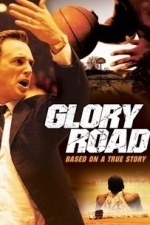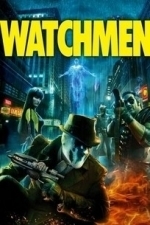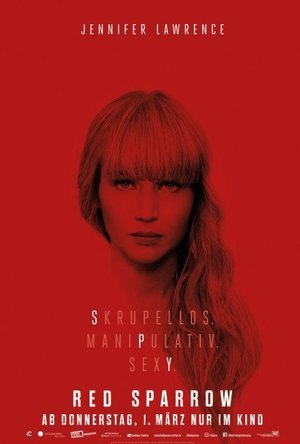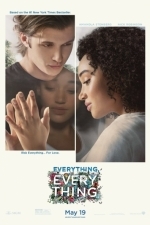
Everything, Everything (2017)
Movie Watch
From Warner Bros. Pictures and Metro-Goldwyn-Mayer Pictures comes the romantic drama “Everything,...
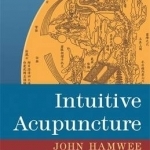
Intuitive Acupuncture
Book
The role of intuition is seldom identified in acupuncture training as one of the keys to effective...

Home Design DIY Interior Floor Layout Space Planning & House Decorating Tool HD by Mark On Call
Productivity and Lifestyle
App
"OUR PICK OF THE 50 BEST IPAD APPS...MARK ON CALL HD" - The Guardian ***DEMO VIDEO @...
Gareth von Kallenbach (980 KP) rated Glory Road (2006) in Movies
Aug 14, 2019
In the new film Glory Road Josh Lucas stars as Don Haskins, a girls Basketball coach who is given the chance to coach a Division 1 team at Texas Western in 1966.
The small school cannot offer the coach much in the way of amenities as Don and his family are required to live in the student’s dorm. Since his dreams of playing pro ball came to a halt after a knee injury, Haskins looks at his job as a chance for him to make a name for himself.
The task will be daunting as Texas Western is a very small school that puts the majority of its athletic budget into the football program leaving next to no money for the gym, new equipment, and recruiting of players.
After a frustrating attempt to recruit players at a local invitational, Haskins sets his sites on a young African American player who while big on attitude, is also big on potential.
With scholarships to offer, Haskins and his staff travel the nation and shock the conservative school by offering scholarships to 8 African American players. In a day and age when teams had at most 1-2 African American players; many of whom did not see much playing time; this is a risky move for the coach.
Undaunted, the coach begins the process of integrating his new players with his current players all of whom are Caucasian, which leads to some tension over starting rights, abilities, and styles.
Haskins is a no nonsense coach who is very strict in regards to grades, effort in practice, and above all avoiding late nights and carousing while the season is underway. Despite this, many players decide to test the will of the coach which raises issues of commitment to the team and discipline, all of which are standard staples of sports films.
When the season starts, a funny thing happens. Not only is the coach playing his African American players in a heavy rotation, but little Texas Western is winning their games and beating some of the more noted teams in the country in the process.
As their notoriety increases so does the amount of hostility directed towards the team from racially incensed fans who do not like the make up of the team and especially hate their success.
Despite this, the team finds itself in the National Championship game against powerful Kentucky coached by the legendary Adolph Rupp (Jon Voight), where Haskins makes history by starting and playing only his African American players which is a first in NCAA finals history.
While the marketing and trailers for the film certainly do not hesitate from telling you most of the above and underscoring that the team ends up in the finals and that the film is based on a true story, it is not about the final results, it is about the journey the team took getting there.
Producer Jerry Bruckheimer is a master at knowing what the fans want and director James Gartner gives viewers a by the number film that delivers the goods. Yes, the film heavily uses all the sporting clichés from the ailing player, the us against the world mentality, the team of misfits, and so on all of which combines to offer little cinematic tension as it is very clear early on and from the ads where this film will end up.
Despite tipping their hand early and throughout, the filmmakers have decided not to rock the boat and have stuck with a tried and true formula that results with a winning albeit very predictable film.
Lucas does a solid job in the roll and makes the best of the material he has to work with. The game sequences are well managed and rousing which had members of my preview audience cheering.
While it offers little originality, Glory Road is a lot of fun, and despite mining every cliché in the book, is an entertaining time at the movies.

Miffy at school
Book and Education
App
Reading together, playing and learning Miffy is at school where she learns how to count and write,...
Modern Dystopian Fiction and Political Thought: Narratives of World Politics
Book
Over the past few years, 'dystopia' has become a word with increasing cultural currency, this book...
Gareth von Kallenbach (980 KP) rated Watchmen (2009) in Movies
Aug 14, 2019
No sooner has the death of the Comedian hit the streets (literally), when the edgy vigilante Rorschach (Jackie Earle Haley), begins to suspect that there is a larger and far more sinister plot in effect, one that has targeted the few remaining costumed avengers of New York City. Rorschach’s theory is disbelieved by his former associate Dan (Patrick Wilson), who prowled the streets as Night Owl and is now content to keep to himself, with his days of costumed glory behind him. He keeps his social circle limited to the first Night Owl and visiting with Laurie Jupiter ( Malin Akerman), and her husband, Dr. Manhattan (Billy Crudup).
With his concerns being dismissed, Rorschach is left to do the legwork on the mystery which soon shifts into high gear when he is framed for a murder he actually did not commit and an attempt is made on the life of the other former Watchmen, Ozymandias (Matthew Goode). With Rorschach in prison and surrounded by enemies, Dr. Manhattan, the all powerful and blue skinned being, is forced to take refuge on Mars after Laurie leaves him and a series of accusations are levied against him at a press conference .
It soon becomes clear to all that the death of The Comedian was not a random act of violence or a simple act of revenge, but rather the first salvo in a war against costumed heroes. With the former team in chaos, Laurie to take up residence with Dan, who has long held a torch for her, to defy the government order and suit up again. After saving a group of people from a fire, Laurie and Dan find the passion and purpose that has been missing from their post-hero lives and passionately unite and set out to free Rorschach and get to the bottom of the conspiracy before it is to late.
The film is an amazing mix of comic book action and mystery that includes a suprising amount of mature material that examines everything from humanity’s ultimate destiny to the inner psyche of tortured and flawed individuals. The characters all have their flaws and traumas and compensate by donning masks and taking on new personas. The deeply troubled Rorschach is filled in by some horrific and disturbing flashbacks that show how he became the disturbed and deeply dangerous crusader for justice that he is, so extreme in his measures that he is wanted by the police for his actions. Dan and Laurie try to move on from their past, but find that they are more comfortable in their costumed personas than they are in their day-to-day lives. Dr. Manhattan is perhaps the most dysfunctional of all as he has shut himself off from his wife, humanity, and joy. He has evolved beyond caring for anything but his experiments.
Snyder keeps the nearly three hour film moving at a brisk pace and deftly captures the look and tone of the graphic novel on which the film is based. The opening segment that shows alternate versions of great moments in history is amazing, as is the well choreographed action sequences. Despite being a superhero film, “Watchmen” is a superb mystery and drama that is loaded with interesting characters and clever social commentary. The cast is very strong, and Haley is remarkable as Rorschach. He is utterly captivating whenever he is on the screen and has crafted a true modern anti-hero for the masses.
Some may find the graphic violence and sex in the film a bit extreme, but in order to fully capture the duality of the characters and the dark world that they dwell in, it was in many ways restrained from what is actually implied by the source material. “Watchmen”, is a true marvel and is one of the most entertaining, diverse, and original action films in memory.
Bob Mann (459 KP) rated Red Sparrow (2018) in Movies
Sep 29, 2021
“Red Sparrow”, the latest film from “Hunger Games” director Francis Lawrence, has Jennifer Lawrence (“Joy“, “mother!“) as Dominika Egorova, a Russian ballerina, who after a horrific accident (cringe) is forced to serve the State in order to keep her mother (Joely Richardson, “101 Dalmations”) in their Bolshoi-funded apartment and with the necessary medical treatment. She is sent to a spy “whore school”, ruled over by “matron” (Charlotte Rampling), to learn how to use sexual and psychological means to ‘get in the pants’ (and therefore the minds) of foreign targets.
Always elegant. Charlotte Rampling back on our screens as “Matron”.
And she turns out to be very good and – without nepotism of course, given that her creepy uncle Egorov ( Matthias Schoenaerts, “Far From The Madding Crowd“) is high up in the special services – she is sent on a mission to Budapest to try to uncover a high profile mole, who’s CIA handler is Nate Nash (Joel Edgerton, “The Great Gatsby“, “Black Mass“). Supervising Egorov’s operation are his two line managers General Korchnoi (Jeremy Irons, “Batman v Superman: Dawn of Justice“) and Zakharov (Ciarán Hinds, “Harry Potter”). Sucked into a web of intrigue, Dominika needs to use all her skills and charms to complete her mission… which equates to keeping herself and her mother alive.
Now on the tarmac, Joel really wans’t looking forward to his Ryanair flight.
This is an extremely uneven film. In places it is quite brilliant, particularly the twist in the ending which leaves you thinking (like “Life“) that the film is actually better than it was. In fact – subject to a couple of severe reservations discussed below – the script by Justin Haythe (“A Cure for Wellness“) and based on a book by Jason Matthews, is quite sharp. But – man – in its direction the film seriously takes its time. In my book, a film needs to have a pretty good reason to extend its stay past 2 hours, and this outstays its welcome by an extra 20 minutes. Many of the scenes are protracted – leisurely walks across streets etc. – for no particularly good reason.
Pwoaahh – look at those. (I’m referring of course to Joel Edgerton’s buns in those speedos).
And so to those major reservations: the sex and the violence.
I’m no prude when it comes to sex, but some of the scenes in the ‘whore school’ left me feeling like this was less about a “Times Up” initiative of empowering women and more about providing an array of sordid titillation on the screen that just help entrench mysoginistic views about women. (Did anyone else hear Kenneth Williams saying “Oooooh, matron” to Charlotte Rampling’s character?) There were men and women attending this training camp, but did we see – later in the film – any of the men subjecting themselves to sexual humiliation or subjugation in the field: no, we did not. I love a really good erotic film… but this just left me feeling dirty and used.
Who wants to go to the f***ing party? No one seems to have remembered to bring a bottle.
And then there’s the violence. I’m definitely not a fan of the sort of violent-porn of the “Saw” type of films, but heavens – if there was a reason to make this an 18 certificate it was the violence involved. Violent rape, a vicious revenge attack, extreme torture, skinning alive: was there nothing in here that the censors thought, “hang on a minute, perhaps I don’t want a 15 year old seeing this”. I have seldom seen and heard more flinching and whimpering from women in a cinema audience than during this film. If you are adversely affected by screen violence, this is really one best to avoid.
“The Cold War hasn’t ended – it has splintered into thousands of dangerous pieces” intones the matron. Similarly, this film has potential but splinters into many pieces, some good but far more sharp and dangerous. With similarities in tone and content to “Atomic Blonde“, there’s a good ‘post cold war’ spy film in here trying to get out. Unfortunately, it never quite gets both legs over the wall.
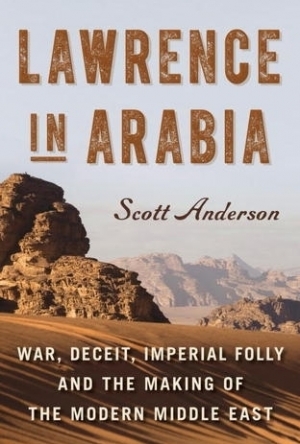
Lawrence in Arabia: War, Deceit, Imperial Folly, and the Making of the Modern Middle East
Book
A thrilling and revelatory narrative of one of the most epic and consequential periods in 20th...

Management of Periprosthetic Joint Infection: A Global Perspective on Diagnosis, Treatment Options, Prevention Strategies and Their Economic Impact: 2017
Book
Periprosthetic joint infection (PJI) is among the most serious complications in the field of...
